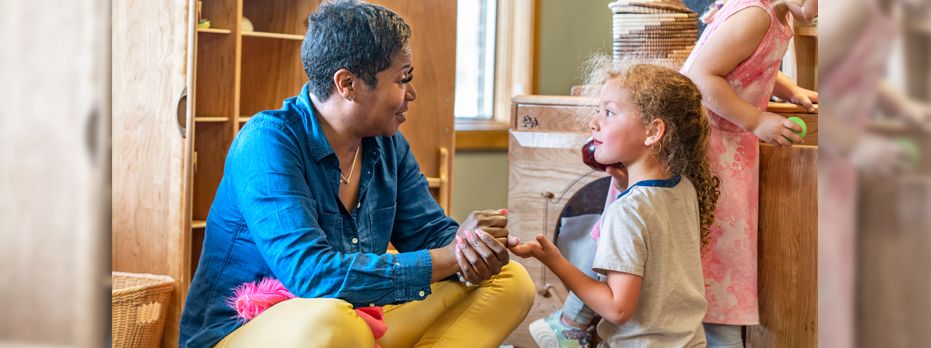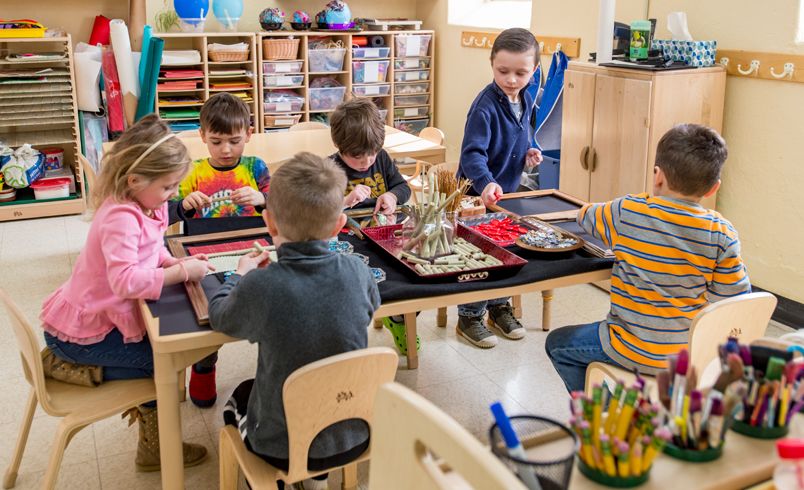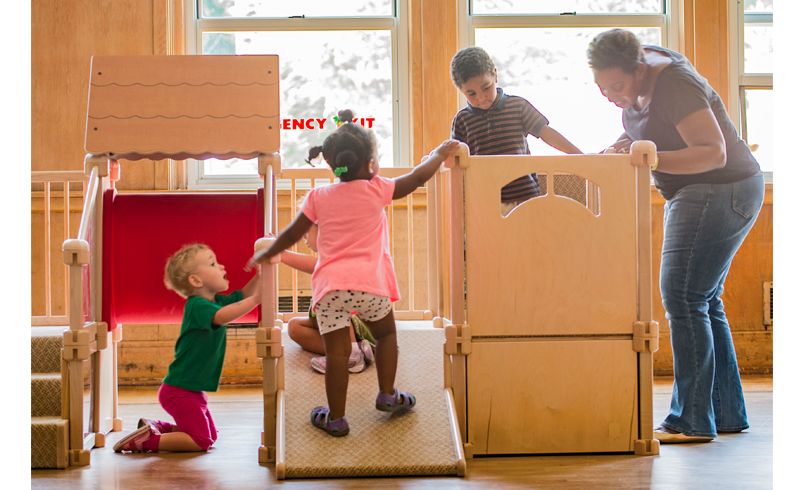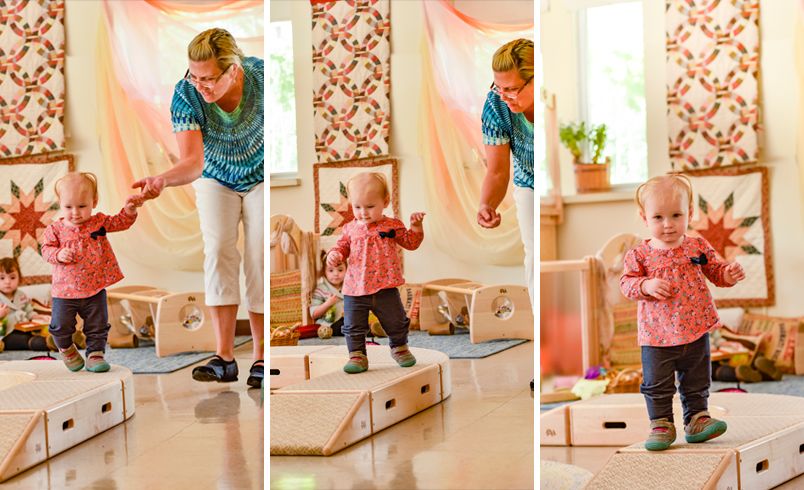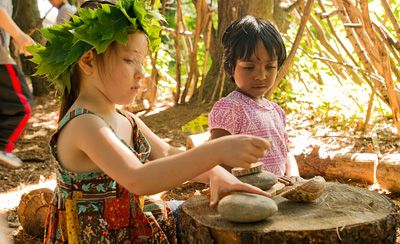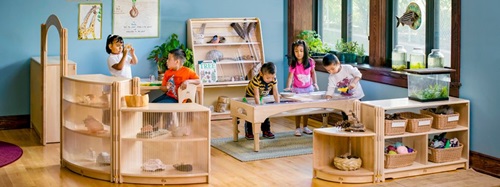Creating a "Yes" Environment
| April 2015Think back to when you were a child. How often were you told “no”? It probably felt frustrating and discouraging. Think of the children in your classroom now. How often are they told “no”? Are they—and you—able to enjoy your day together if you have to say “no” all the time?
When a classroom environment is set up so that teachers have to constantly say “no” to the children, it is stressful for everyone. The teacher stops being a facilitator of the children’s play and learning, and instead becomes a police officer, monitoring what the children can and cannot do. To reduce this stress, a classroom must provide an environment where the children are able to feel successful through opportunities to explore without the limitations of adult expectations.
There are four important parts to a “yes” environment: respect for the child, process instead of product, opportunities for risk-taking, and the teacher’s role in the classroom. Being thoughtful and intentional about implementing these qualities in the classroom allows for less stress and more success, for both the children and their teachers.
Respect for the child
It’s important to know where your children are in their development. You can then set up the classroom accordingly, providing areas or activities at which they can be successful without the assistance of an adult. Doing this shows that you have respect for what the children are able to do. Of course, giving them a few challenges isn’t a problem—but it becomes a problem when the children feel like they have to ask the adult to do it for them.
If you put a child onto a tricycle, he isn’t going to learn how to get onto it himself. The next time, if you aren’t there, he’ll be frustrated about doing it on his own. Children will eventually learn to use materials and equipment once they reach the developmental stage which allows them to navigate those things. If they become dependent on us to do it for them, they won’t feel successful doing an activity that is beyond their skill level.
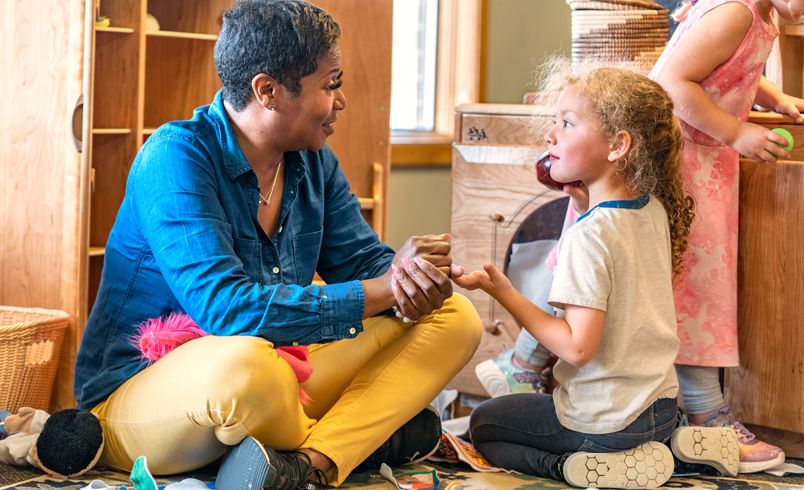
Process instead of product
In creating an environment of success, it is crucial to offer open-ended activities and not expect a particular end result. Children need opportunities to explore materials in their own way, at their own pace. They need to be allowed to make messes and make mistakes.
When a young child begins to paint off the paper and onto the easel or tray, it’s hard to resist saying, “Don’t paint on the easel,” or, “Paper is for painting.” When you focus on the process, though, you see that the child is learning about how the paint and the brush work and where they make marks. Ask yourself: does it matter if the easel gets messy?
Opportunities for risk-taking
Children need opportunities to climb and run, to get messy and get wet. Fortunately, they’re still small, and if they fall down, they’re close to the ground. Falling probably scares them more than it does injury to their bodies. While you can do your best to prevent hazards, you can’t ensure that children will never get hurt. You can be there to help if they do get hurt, but you shouldn’t hover.
If a toddler wants to climb up the ramp onto the climbing structure, and you’re not sure how she’ll manage, be nearby in case she needs help. Don’t place her onto the ramp or pull her down if she seems stuck. Don’t tell her, “No, that isn’t safe.” Doing so sends the message that you will always be there to move her onto and off of the ramp and that she isn’t capable of climbing the structure. If she never falls, she never learns how to hold on tightly, how to balance her body, or how to catch herself if she slips.
The teacher’s role
The most important role of teacher in a “yes” classroom is as facilitator. In this role, teachers give guidance and partner with children in their learning processes. This takes the emphasis off the teacher’s agenda and puts in on what children are doing and how the teacher can assist them.
If you’re feeling that the children are “out of control,” reflect on what is happening in that moment. Often, a teacher’s expectations of what should be happening don’t match where the children are developmentally and temperamentally. Rather than expect children to sit still for a story at circle time, you might have to change your own thinking in order to meet the children’s needs in that moment. If some children want to run, give them the option to run before the story—or excuse them from the circle altogether, which gives them an opportunity to run while the remaining children hear the story. What if no children want to sit still for a story? Perhaps it isn’t the right time, and you can try again later.
Teachers set up the classroom, create the schedule of the day, and plan the curriculum. We also have to be flexible because the classroom is for the children. The focus should be on what the children want to do. If we try to control too many elements, it becomes easy to feel “out of control” and stressed out. In those moments, it might be best to take a breath, maybe laugh a little, and understand that it’s time to try something different.
Creating a “yes” environment in the classroom doesn’t mean that teachers allow the children to do whatever they want. It means that we have patience for the children and meet their needs in a developmentally appropriate way. In doing this, we get back to what children actually want to do with their bodies. It may also mean that we push the limits of our comfort zones to get there. If it means less stress for every person in the classroom, the journey is worth it.

